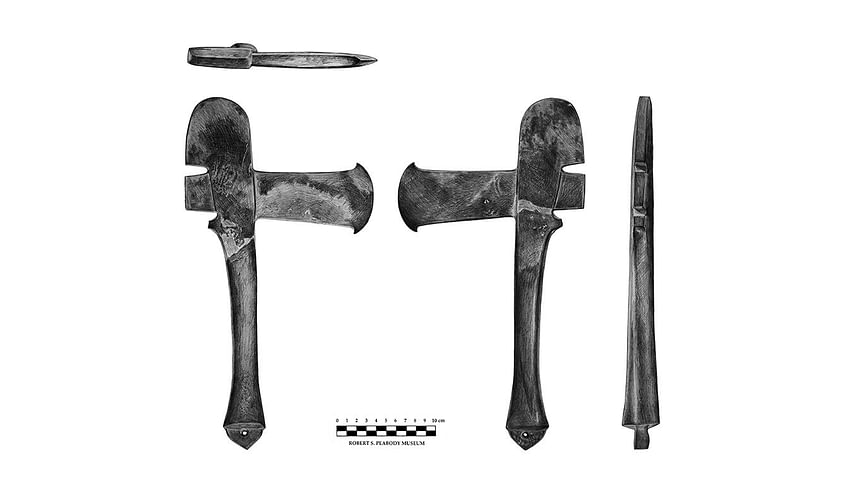October 28, 2019
Rare, valuable artifacts returned to Peabody Institute
Mystery surrounding their disappearance remainsA rare and valuable artifact, missing for nearly three decades, was recently returned to the Robert S. Peabody Institute of Archaeology at Phillips Academy.
The artifact—known to archaeologists as a monolithic axe—was returned by collector and businessman John Morgan of Austin, Indiana. This is the third missing artifact returned to the Peabody Institute since March 2018. Mr. Morgan had purchased the artifact in 2014 and upon learning of its history fully cooperated in its return.
The monolithic axe and other objects of the Mississippian culture (circa AD 1400) were excavated at the Etowah and Little Egypt sites in Georgia between 1925 and 1928 by Warren K. Moorehead, then-director of the Peabody. Carved of stone, the axe is particularly rare, with only 25 known examples from sites in the southeastern United States.

Curators at the Peabody Institute first became aware that the monolithic axe and other artifacts from were missing from the collection in the early 1990s. At that time an engraved shell disk with an elaborately engraved image of two birds was recovered.
In January 2018, Peabody director Ryan Wheeler was contacted by Thomas Rachels of Cordele, Georgia, who had purchased a spatulate stone celt that also originated at the Etowah site. This elaborate weapon, possibly a marker of honor and social status, also was discovered to have been missing from the collection. The Andover Police Department and the Federal Bureau of Investigation’s Art Crime Team in Boston used information from this recovery to effect the return of a missing shell disk and eventually track down the monolithic axe.
The Etowah and Little Egypt sites date from AD 1000 to AD 1550. Southeastern sites of this period belong to the Mississippian culture, linked to modern-day Native American tribes through the Creek language. Many of the objects from these sites are funerary belongings and subject to repatriation under the Native American Graves Protection and Repatriation Act (NAGPRA). The affiliated Southeastern tribes have been notified about the return of the artifacts.
“The circumstances surrounding the disappearance of the Etowah and Little Egypt artifacts remain a mystery,” said Wheeler, “but we are grateful to Mr. Morgan, Mr. Rachels, and others involved in restoring these collections, as well as the Andover police personnel and FBI agents who tracked down the missing objects.”
Recently returned objects to the Peabody Institute:
- Spatulate stone celt, Etowah site, Cat. No. 61783. This is a rare artifact type in the Southeast. The lack of use wear, specialized manufacture, exotic material, and mortuary associations suggest these elaborate weapons were markers of social status, possibly an achieved war honor or marker for town war chief. Recovered March 2018
- Engraved Citico style shell gorget, Little Egypt site. Cat. No. 82/115. Crafted from large marine shells, these were likely worn as part of an elaborate necklace. The stylized design is a rattlesnake. Recovered November 2018
- Monolithic stone axe, Etowah site, Cat. No. 61466. Recovered June 2019
Categories: Academics
Other Stories

Andover classrooms are on the cusp of an AI-powered transformation.

Sarah Sherman ’04 on NASA's groundbreaking tech that will help humankind reach new heights in space



